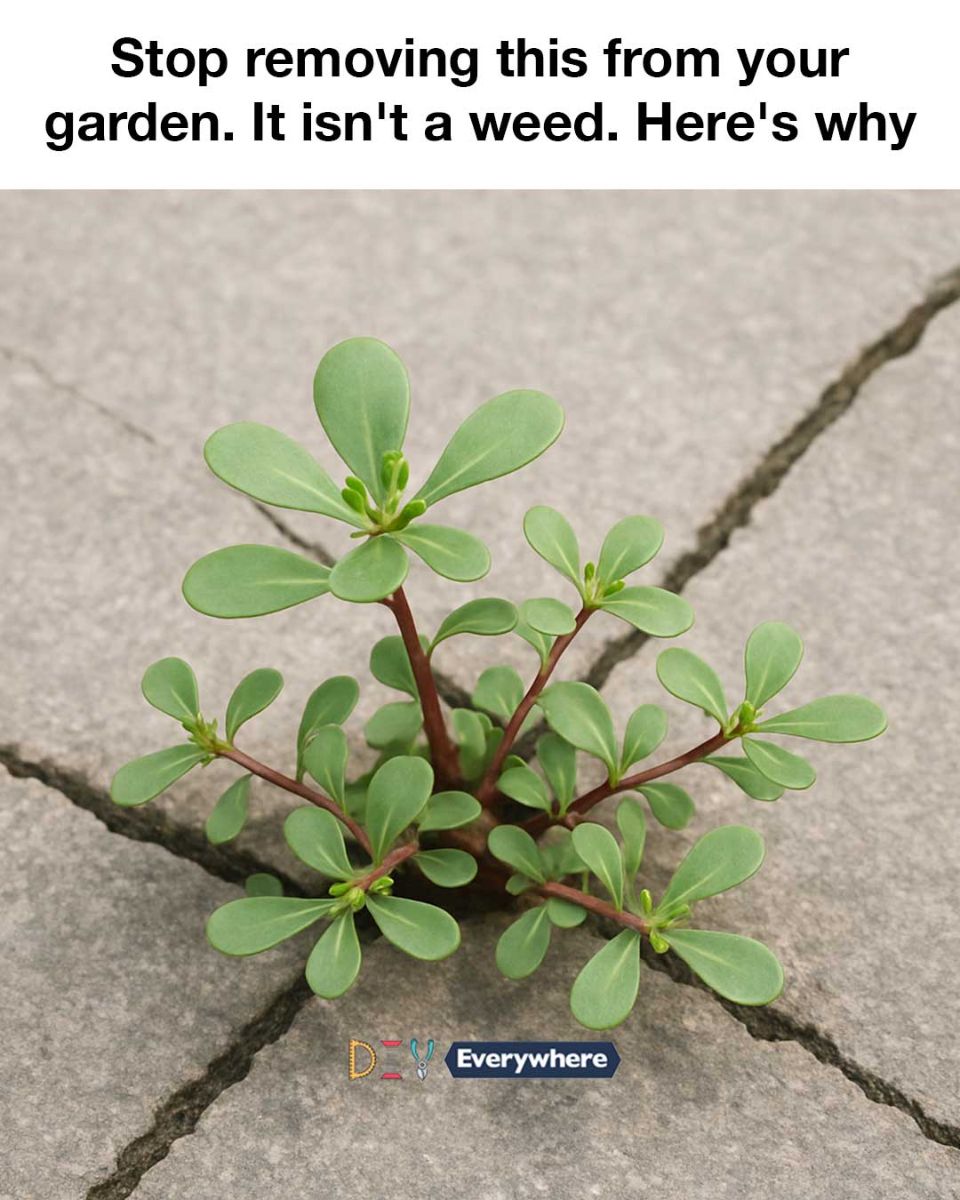In the world of gardening, the term ‘weed’ often carries a negative connotation, suggesting an unwelcome intruder that competes with cultivated plants for resources. However, not all plants labeled as weeds deserve such a reputation. One such misunderstood plant is purslane, a resilient and versatile species that many gardeners mistakenly remove from their plots.
Purslane, or Portulaca oleracea, is often dismissed as a common weed, but it is far from being a mere nuisance. This hardy plant offers a multitude of benefits, both for human consumption and for the garden ecosystem. In this article, we will explore why you should reconsider removing purslane from your garden and instead embrace its presence.
1. Understanding Purslane: Not Just a Weed
Purslane is a succulent plant that thrives in a variety of climates and soil conditions. It is characterized by its fleshy, spoon-shaped leaves and small yellow flowers. Despite its reputation as a weed, purslane is actually a highly adaptable plant that can grow in poor soil and withstand drought conditions.
Botanically, purslane belongs to the Portulacaceae family and is native to India and Persia. It has spread across the globe, often popping up in gardens, sidewalks, and fields. Its ability to grow in challenging environments is a testament to its resilience and adaptability, making it a valuable plant for gardeners seeking low-maintenance options.
2. Nutritional Powerhouse: The Health Benefits of Purslane
Purslane is not only a resilient plant but also a nutritional powerhouse. It is rich in omega-3 fatty acids, particularly alpha-linolenic acid, which is rare for a plant source. A 100-gram serving of purslane contains approximately 350 mg of omega-3s, making it an excellent addition to a heart-healthy diet.
In addition to omega-3s, purslane is packed with vitamins and minerals, including vitamin A, vitamin C, magnesium, calcium, potassium, and iron. It also contains antioxidants such as beta-carotene and glutathione, which help combat oxidative stress and inflammation in the body.
3. Culinary Uses: How to Incorporate Purslane into Your Diet
Purslane’s slightly tangy and lemony flavor makes it a versatile ingredient in the kitchen. It can be eaten raw in salads, adding a refreshing crunch and a nutritional boost. Purslane pairs well with cucumbers, tomatoes, and feta cheese, making it a perfect addition to Mediterranean-style dishes.
Cooked purslane can be used in soups, stews, and stir-fries. Its mucilaginous texture helps thicken dishes, similar to okra. In Mexican cuisine, purslane is often used in traditional dishes like ‘verdolagas con carne de puerco,’ a savory pork stew. Its culinary versatility makes it a valuable plant for any home cook.
4. Environmental Benefits: Purslane’s Role in Your Garden Ecosystem
Purslane plays a significant role in promoting biodiversity in your garden. Its flowers attract pollinators such as bees and butterflies, which are essential for the health of many other plants. By providing a habitat and food source for these beneficial insects, purslane helps maintain a balanced ecosystem.
Additionally, purslane’s dense ground cover helps prevent soil erosion by protecting the soil from wind and water. Its roots stabilize the soil, reducing the risk of nutrient runoff and helping to maintain soil structure.
see nexte page
ADVERTISEMENT
ADVERTISEMENT

